WATERS OF LIFE
THE WATER MASSES
NORTH SHORE

Satellite photograph highlighting the norh shore waters of Lake Saint-Pierre.
Source of the water masses
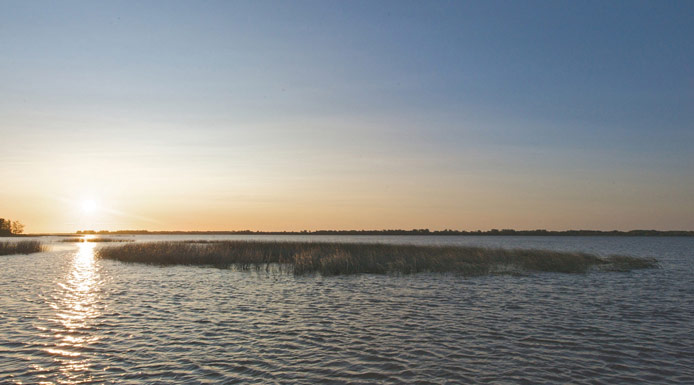
The northern body of water is fed primarily by the Ottawa River, as well as the Assomption, Chicot, Maskinongé, du Loup, Bayonne and Yamachiche Rivers. The Ottawa River is the largest tributary on the north shore. It contributes 19 % of Lake Saint-Pierre’s water volume, while the other north shore tributaries only contribute 1 %.
Physical characteristics
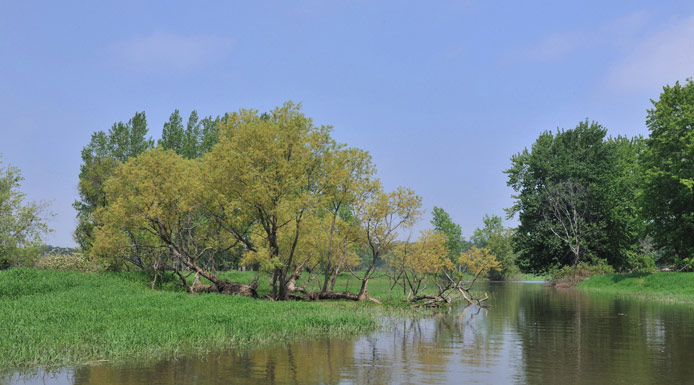
De la Sauvagesse channel
The northern water mass has the lowest discharge. Towards the end of the summer, the water becomes nearly stagnant.

The calm, shallow waters promote the growth of vast beds of macrophytes (aquatic plants that are visible with the naked eye).
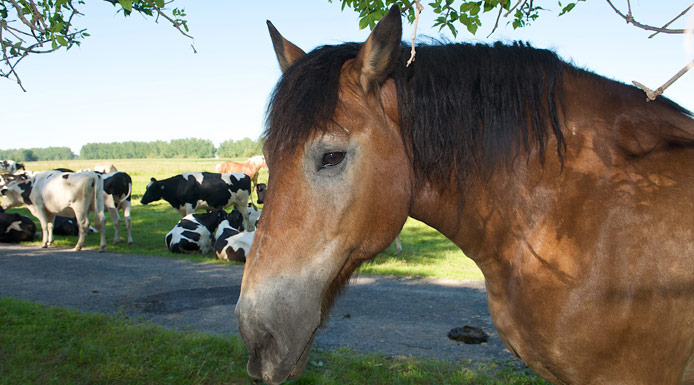
The tributaries deposit large amounts of nutrients, originating from agricultural practices in their watersheds, into the north shore waters.

Here is a field of soybeans cultivated on an island near the north shore of Lake Saint-Pierre.
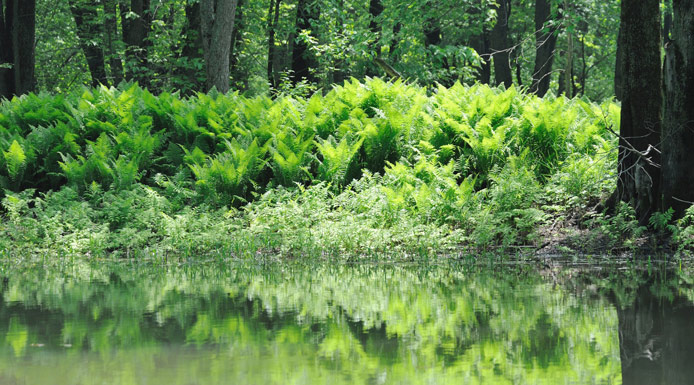
The brownish, opaque waters of the north shore result from high concentrations of organic matter from decomposing plants.
Disturbances

Agriculture is much in evidence on the north shore of Lake Saint-Pierre and provides an excess of nutrients.
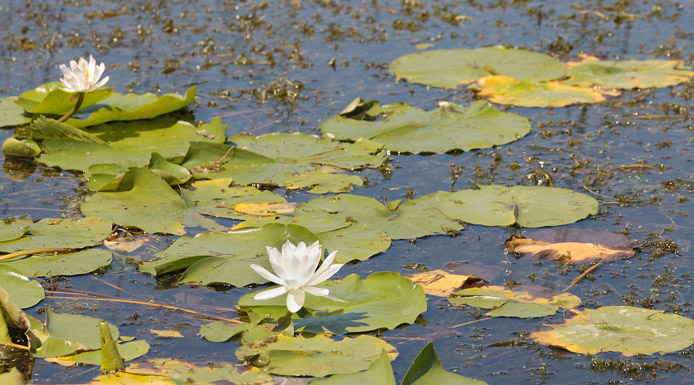
Water-lilies
High loads of nutrients, and especially of phosphorus, promote algal and cyanobacterial blooms and the excessive growth of aquatic plants.
